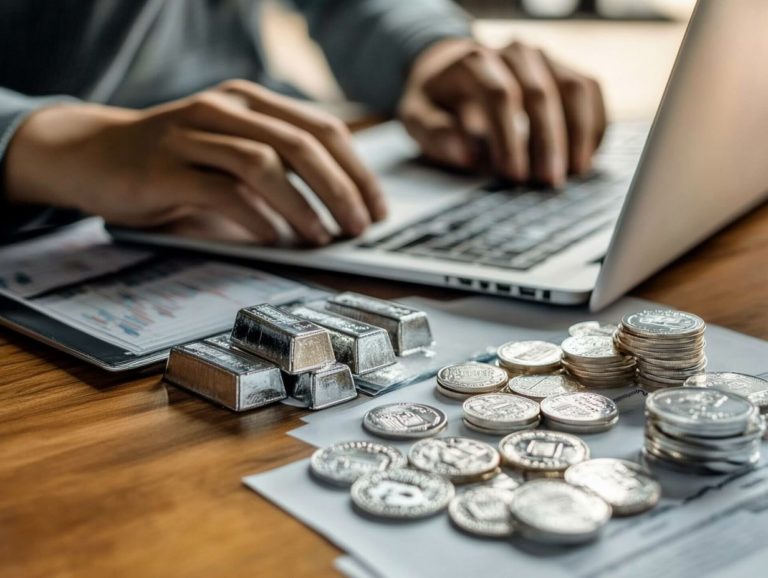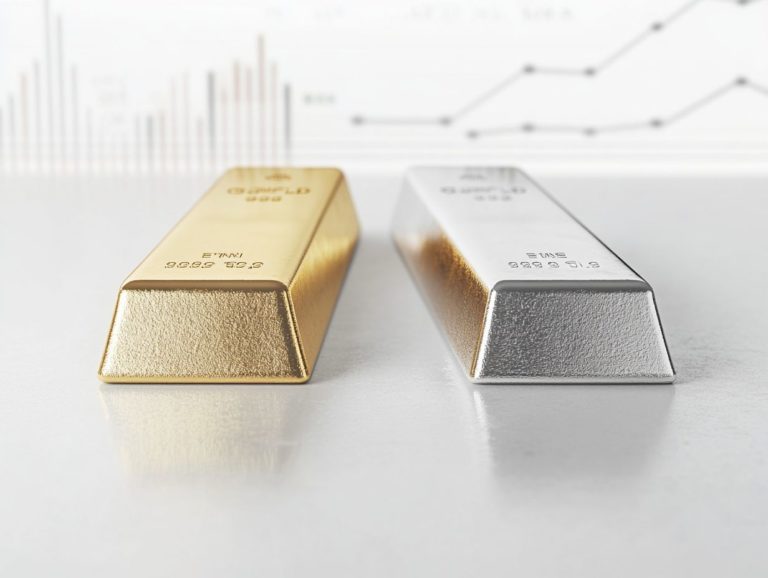5 Myths About Platinum Investments Debunked
Platinum may often find itself in the shadow of gold, but it brings distinct advantages that elevate it as a compelling investment choice.
This article delves into five common myths surrounding platinum investments, addressing misconceptions about its value relative to gold and the belief that only the affluent can engage in such investments.
You ll discover what platinum truly is, gain insights into its market dynamics, learn how to invest wisely, and evaluate the potential risks and rewards.
Join us as we reveal the exciting truths about investing in this exquisite precious metal.
Contents
- Key Takeaways:
- 1. Platinum Is More Valuable Than Gold
- 2. Platinum Is a Safe Investment Option
- 3. Only the Wealthy Can Invest in Platinum
- 4. Platinum Is a Stable Investment
- 5. Investing in Platinum Is a Surefire Way to Make Money
- What Is Platinum and Why Is It Considered a Precious Metal?
- What Are the Common Misconceptions About Investing in Platinum?
- How Can One Get Started with Investing in Platinum?
- Frequently Asked Questions
- 1. What are the common misconceptions about investing in platinum?
- 2. Is platinum only used in the jewelry industry?
- 3. Are platinum investments too expensive?
- 4. Is it true that platinum is a volatile investment?
- 5. Will investing in platinum negatively impact the environment?
- 6. Can I only invest in platinum through physical bullion?
Key Takeaways:
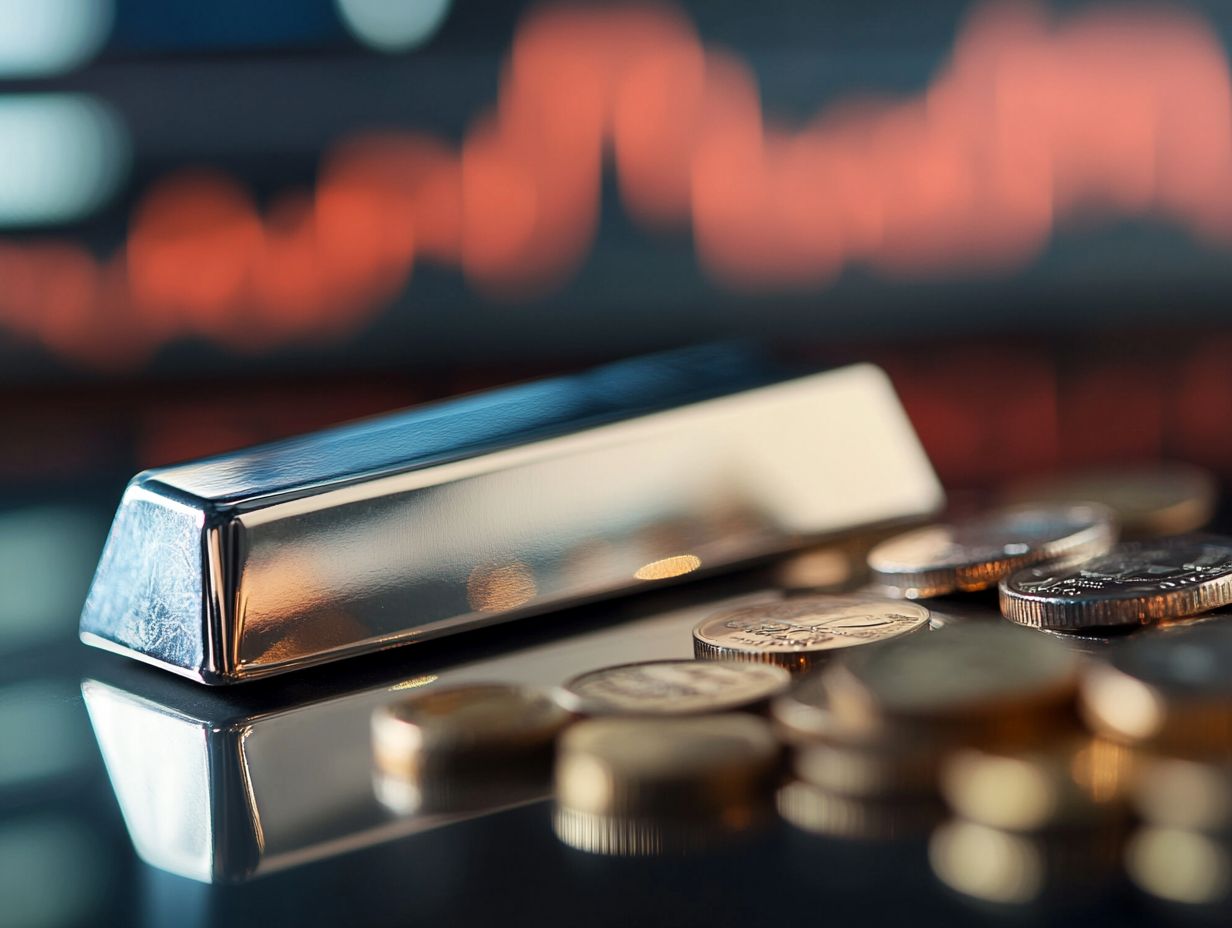
- Platinum is not necessarily more valuable than gold – its value fluctuates based on market conditions.
- While platinum may be considered a safe investment, it is not risk-free and should be carefully considered before investing.
- Investing in platinum is not limited to the wealthy – there are various ways to invest in this precious metal.
1. Platinum Is More Valuable Than Gold
Platinum, often overlooked in favor of gold, possesses a unique rarity and intrinsic value. This positions it as a fascinating investment option in the realm of precious metals.
Especially in fluctuating market conditions, where stability and asset appreciation are paramount, platinum stands out.
When you compare it to gold, you’ll find that platinum is significantly rarer. It exists in much smaller quantities and is mined at a fraction of gold’s production level.
This scarcity, paired with its remarkable properties like corrosion resistance and a high melting point enhances its durability and versatility across various industrial applications.
Market performance indicates that platinum tends to respond differently during economic shifts. This offers chances for smart investors.
As demand surges in sectors such as automotive and electronics, the intrinsic value of this metal rises. This makes it a compelling hedge against inflation and a robust addition to diversified portfolios.
2. Platinum Is a Safe Investment Option
Investing in platinum is often regarded as a prudent choice. It provides a hedge against inflation while ensuring financial security through its consistent market demand and diverse industrial applications.
Historically, platinum has demonstrated remarkable resilience during economic downturns. It serves as a dependable store of value.
Take the 2008 financial crisis, for example; despite the chaos in the markets, platinum prices held steady. This was largely due to its critical role in various industries, particularly automotive manufacturing for catalytic converters.
This industrial demand not only bolsters prices during uncertain economic times but also highlights how the metal’s unique properties contribute significantly to its stability.
Ultimately, platinum s multifaceted utility ensures that it remains a valuable asset, even in the face of challenging economic circumstances.
3. Only the Wealthy Can Invest in Platinum
There s a common misconception that only the affluent can invest in platinum. In reality, there are various investment avenues available.
Options like exchange-traded funds (ETFs) and mutual funds open the door for a wider range of investors to diversify their portfolios with this precious metal.
For example, if you’re drawn to more tangible assets, purchasing platinum coins or bars could be your preference.
On the other hand, if you favor simplicity, ETFs offer a straightforward way to gain exposure without the hassle of physical storage.
Financial advisors are essential in this landscape. They help individuals of all income levels navigate these opportunities.
They can craft tailored strategies that align with your financial goals, risk tolerance, and prevailing market conditions. This ensures that both novice and seasoned investors are equipped to make informed choices about incorporating platinum into their investment strategies.
4. Platinum Is a Stable Investment
Contrary to popular belief, platinum can indeed serve as a stable investment. Its price appreciation often surpasses that of other precious metals during periods of market volatility. This makes it an appealing option for those focused on wealth preservation.
Historical trends bolster this perspective, especially during economic downturns and geopolitical tensions. For example, in 2008, while gold and silver experienced significant price fluctuations, platinum maintained a steadier course and ultimately recovered more swiftly.
Fast forward to 2020, amid the pandemic, and you ll find platinum prices climbing over 20%, while gold increased by 25% and silver faced its own erratic swings. This stability comes from strong industrial demand, especially in automotive catalytic converters, which helps shield it from pure speculative price movements.
As a result, investors seeking balance will find platinum intriguing due to its performance.
5. Investing in Platinum Is a Surefire Way to Make Money
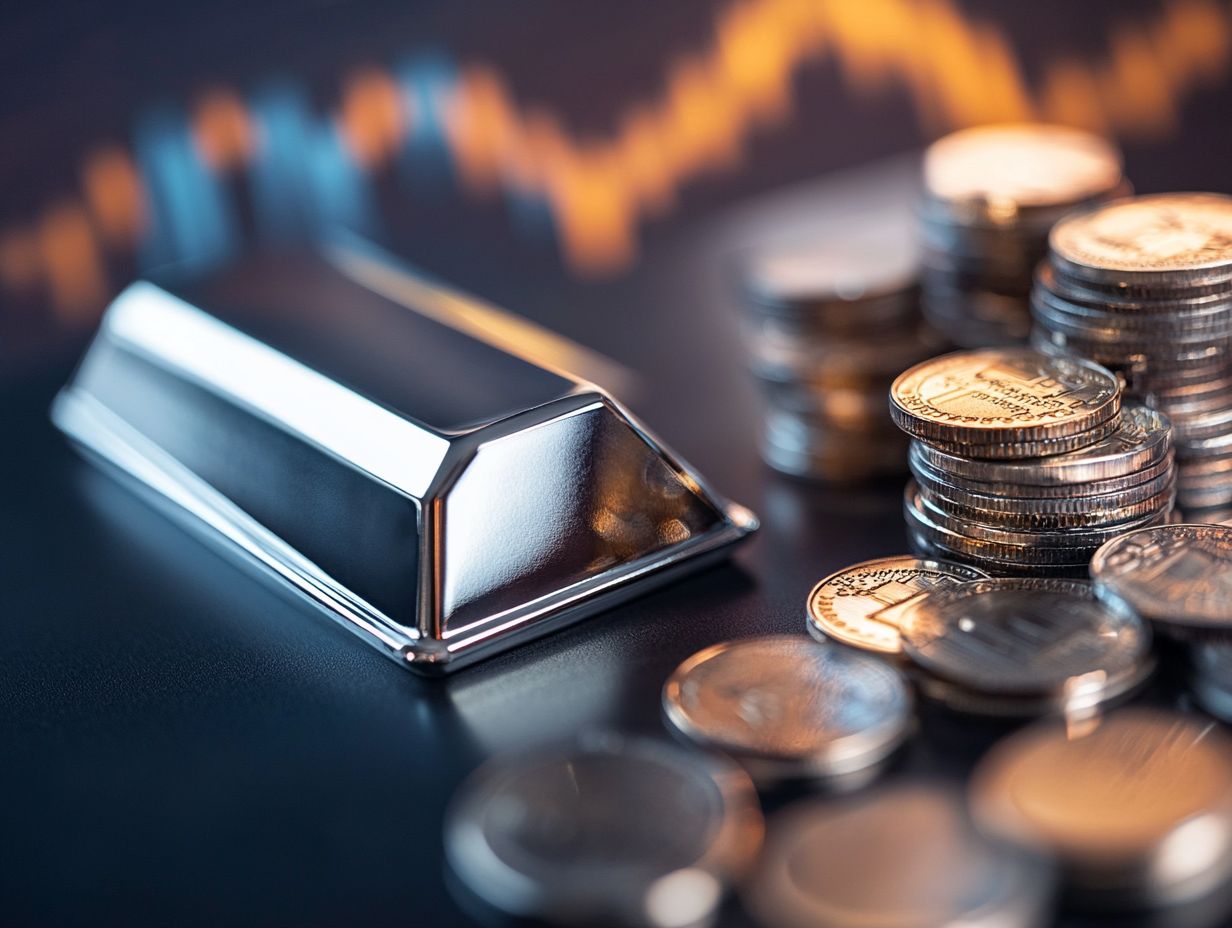
Investing in platinum can lead to impressive long-term gains. However, it’s essential to approach this opportunity with clear investment strategies to secure your financial future amid the ever-changing market landscape.
Understanding realistic expectations for returns is vital. Market dynamics can significantly impact profitability. Recognize that, like any precious metal, platinum s value can be quite volatile and is influenced by supply and demand fluctuations, geopolitical events, and economic indicators.
By diversifying your portfolio with various asset types such as stocks, bonds, and other commodities you can effectively mitigate risks and balance potential losses. Crafting sound investment strategies that incorporate risk management techniques enables you to navigate the complexities of the market, maximizing your potential returns while protecting yourself from unforeseen downturns.
What Is Platinum and Why Is It Considered a Precious Metal?
Platinum is a distinguished member of a group of valuable metals that includes platinum. It is celebrated for its exceptional properties, including durability, corrosion resistance, and indestructibility. This makes it highly desirable not just for exquisite jewelry but also for a range of industrial applications that enhance its intrinsic value.
Its remarkable density and malleability allow for precise shaping. Platinum is an ideal choice for catalytic converters, electronics, and medical equipment. These unique characteristics ensure that it remains stable even under extreme conditions, further driving demand in industries where reliability is essential.
The limited supply and intricate extraction process elevate its market value, carving out a niche that attracts both investors and manufacturers. As a result, platinum’s distinctive attributes seamlessly integrate into diverse applications, solidifying its reputation as one of the most valuable resources in today s economy.
What Are the Factors That Affect the Price of Platinum?
Several factors impact the price of platinum, including:
- Market conditions
- Industrial demand
- Investment options
These elements contribute to its ever-changing value in the global economy.
You ll find that supply and demand are crucial in shaping these prices. Any disruptions in mining output or a rise in industrial usage especially in automotive catalytic converters can lead to significant price spikes.
Geopolitical events, such as strikes in major producing countries like South Africa, often introduce uncertainty into supply chains, further affecting costs.
Economic indicators, including inflation rates and the strength of currencies, can sway investor sentiment, resulting in heightened volatility in platinum s valuation. During the 2008 financial crisis, a surge in safe-haven buying pushed prices higher, showcasing the complex interplay of these various elements.
What Are the Different Ways to Invest in Platinum?
Investing in platinum opens up a world of possibilities. You can purchase physical platinum bullion, explore platinum ETFs, or engage with precious metal scrap options.
Each method has unique opportunities and considerations. With physical platinum bullion, you gain the peace of mind of owning the actual metal. However, secure storage and insurance are required.
Platinum ETFs provide a way to gain exposure to the metal without owning it physically. Just be mindful of management fees that could diminish your profits.
If you prefer a mutual fund focused on platinum, that can also be an attractive choice. It enables diversification across various platinum-related assets, although liquidity may not be as favorable as direct investments.
Investing in scrap metals allows you to engage actively with the market. However, you need a solid understanding of valuation and condition to maximize your return on investment.
What Are the Risks of Investing in Platinum?
Investing in platinum carries unique risks, including market volatility and price fluctuations. These factors are crucial as you develop your financial strategies.
Shifts in market demand can profoundly impact platinum prices. Industries that rely on this precious metal like automotive and electronics often adjust to changing consumer preferences or technological advancements. This can lead to significant price changes. Economic downturns can also decrease industrial production, directly influencing platinum’s value.
Don t overlook external factors such as geopolitical tensions or variations in mining output, as they can play pivotal roles in shaping market behavior. Consulting a financial advisor can help you navigate these complexities and assess your investment risks.
How Can One Determine If Platinum Is the Right Investment for Them?
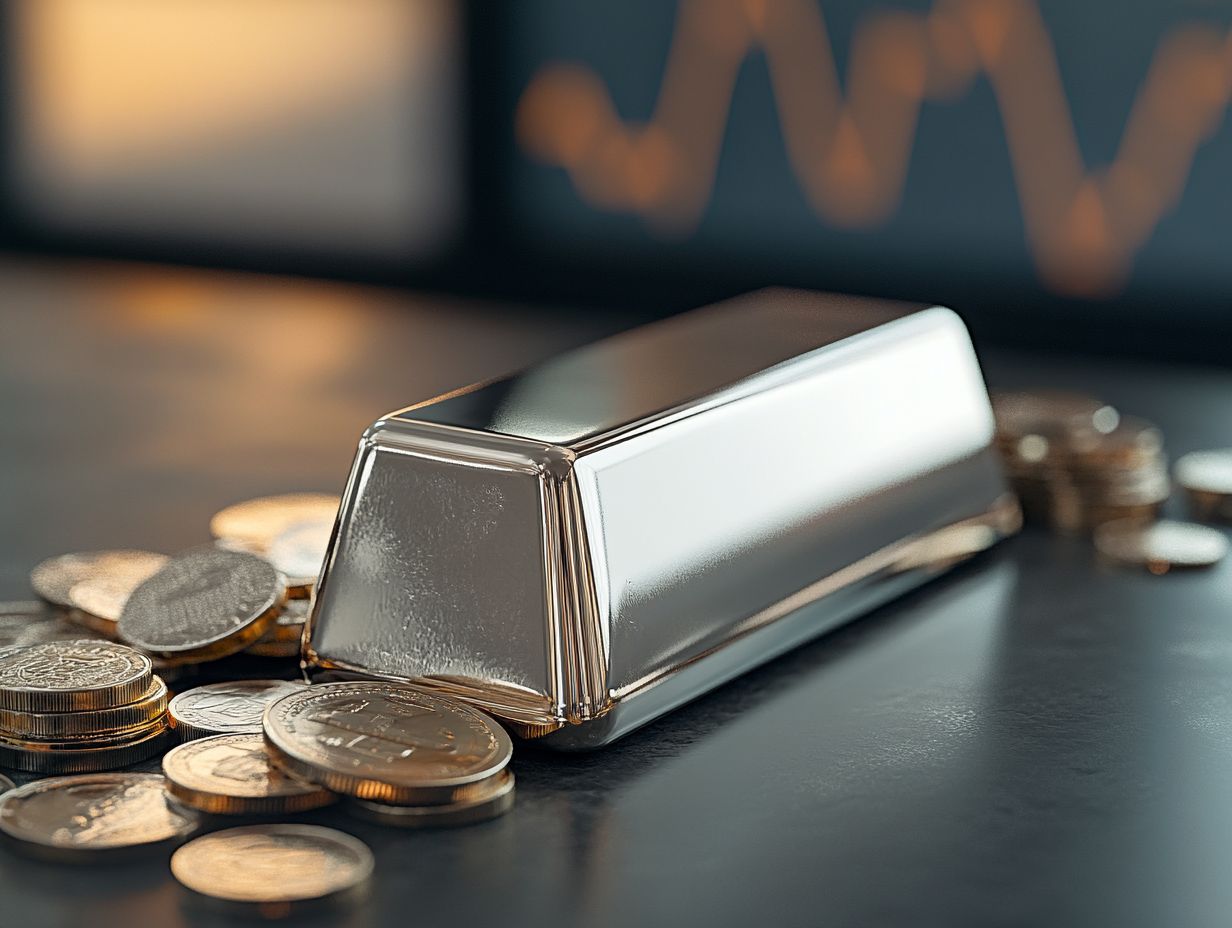
To determine if platinum is the right investment for you, carefully assess your current portfolio, understand market conditions, and possibly consult a financial advisor for tailored advice.
This evaluation starts with a review of your financial situation, including an analysis of your cash flow, existing debts, and anticipated future expenses. Understanding your risk tolerance is vital, as it informs whether to take a conservative or aggressive stance toward this precious metal.
Clearly defining your investment objectives whether that s portfolio diversification or long-term wealth accumulation is crucial. Engaging with a financial expert can provide invaluable insights, ensuring that you consider all relevant factors like market volatility and price trends.
With professional guidance, you can make informed choices that align with your financial aspirations. This significantly enhances your chances of a successful investment strategy.
What Are the Potential Benefits of Investing in Platinum?
Investing in platinum could unlock some exciting benefits for you, including wealth preservation, intrinsic value, and a robust hedge against inflation. This makes it a valuable addition to your investment portfolio.
Its rarity compared to gold and silver adds to its allure, as platinum often commands higher prices during times of economic uncertainty. For example, during the 2008 financial crisis, platinum maintained its relative value while other assets took a sharp dive.
Moreover, the metal s diverse industrial applications increase its demand. It plays a crucial role in automotive catalytic converters and various electronic components.
Therefore, platinum not only acts as a shield against inflation but also diversifies your investment strategy. If you’re seeking stability, considering this asset class could be a savvy move to enhance your long-term financial security. Don t miss out on the chance to enhance your financial security consider platinum today!
What Are the Common Misconceptions About Investing in Platinum?
Don t let misconceptions hold you back! Discover the truths about platinum investing that could unlock your financial potential. Common misconceptions can easily lead to misunderstandings. You might believe it s overly risky or that it s only meant for the wealthy, which could deter you from exploring valuable investment strategies.
Many individuals assume that platinum is too volatile compared to more traditional assets like gold or stocks. However, the market for platinum has shown resilience and stability over time. You may also think that only affluent investors can dabble in platinum transactions, yet there are numerous accessible options for those eager to diversify their portfolios.
Recognizing these myths is essential. By grasping the realities of platinum investing, you ll be better equipped to make informed decisions, ultimately paving the way for potential growth and financial security.
How Can One Get Started with Investing in Platinum?
Begin your journey by researching different investment options. Work with a financial advisor to create a solid plan and ensure secure storage for your physical assets to protect your investment.
To kick things off, consider exploring options like platinum ETFs or mining stocks. Each offers unique exposure to the metal. Familiarizing yourself with market trends, especially how supply and demand affect prices, can greatly influence your decisions. It s essential to establish a clear financial strategy that outlines your budget limits, risk tolerance, and investment goals.
Understanding the significance of secure storage solutions is equally important. Options such as vault services or safe deposit boxes protect against theft or damage and enhance the overall security of your investment.
Frequently Asked Questions
1. What are the common misconceptions about investing in platinum?
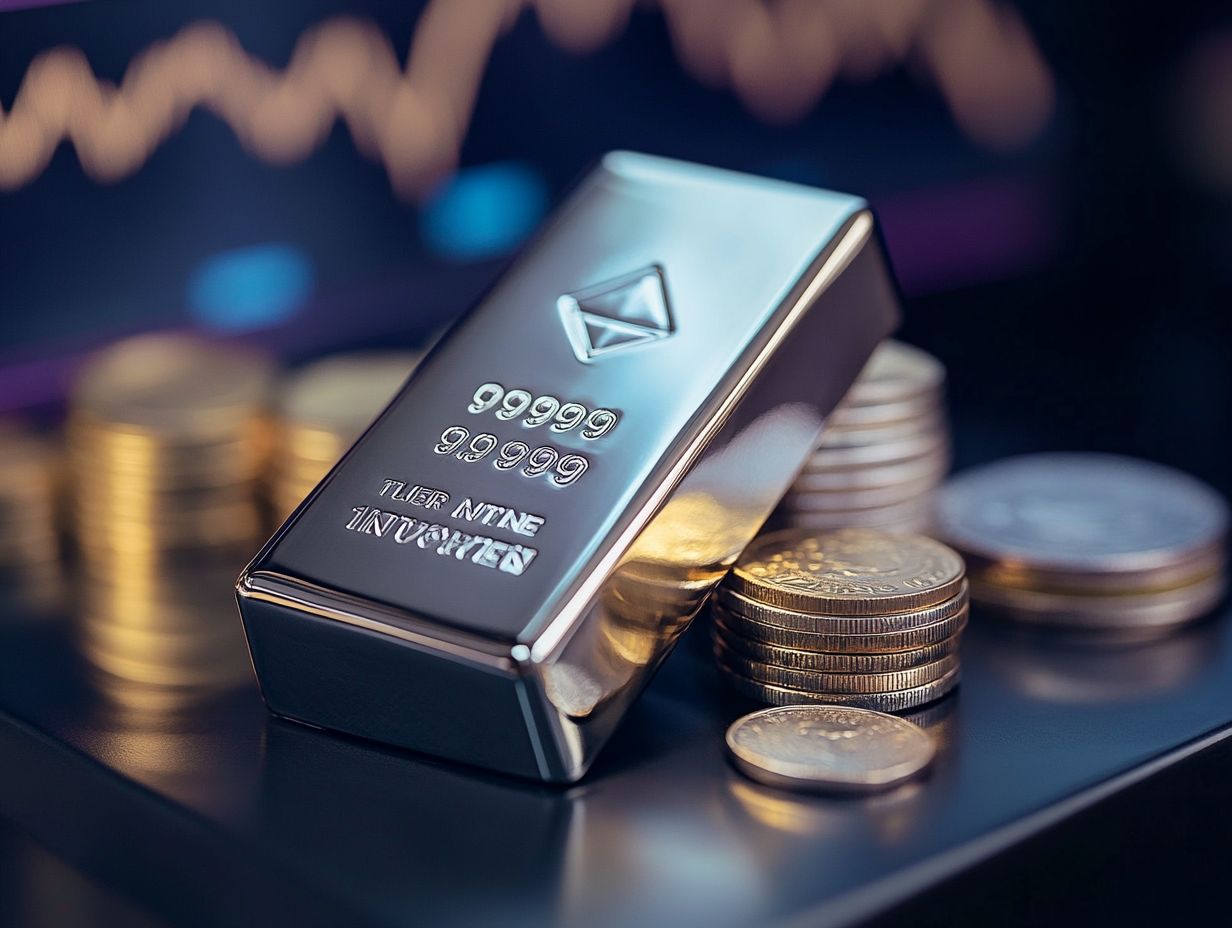
Some people believe that investing in platinum is too risky, too expensive, or too complicated. These myths can easily be debunked.
2. Is platinum only used in the jewelry industry?
Surprisingly, platinum isn t just for the rich! Platinum is also used in various industrial applications such as catalytic converters, electronics, and medical equipment.
3. Are platinum investments too expensive?
It is a common misconception that investing in platinum is only for the wealthy due to its high price. However, there are various ways to invest in platinum, such as through stocks, ETFs, or physical bullion, making it accessible to investors of all budgets.
4. Is it true that platinum is a volatile investment?
Platinum is often seen as a volatile investment due to its price fluctuations. However, like any other investment, it is important to have a long-term perspective and not be swayed by short-term volatility.
5. Will investing in platinum negatively impact the environment?
Another common myth about platinum investments is that it has a negative impact on the environment. In reality, platinum mining is regulated, ensuring companies follow strict environmental guidelines.
6. Can I only invest in platinum through physical bullion?
No, there are various ways to invest in platinum, and physical bullion is just one option. Other options include stocks, ETFs, and even digital platforms that allow for fractional ownership of platinum.












